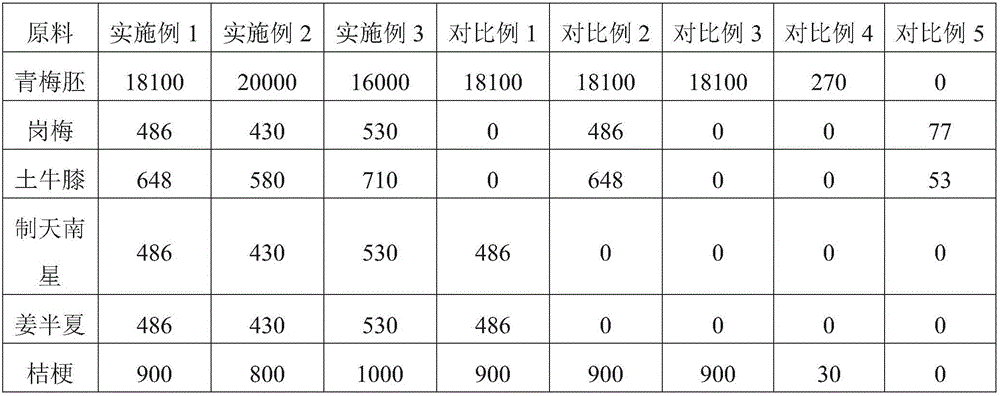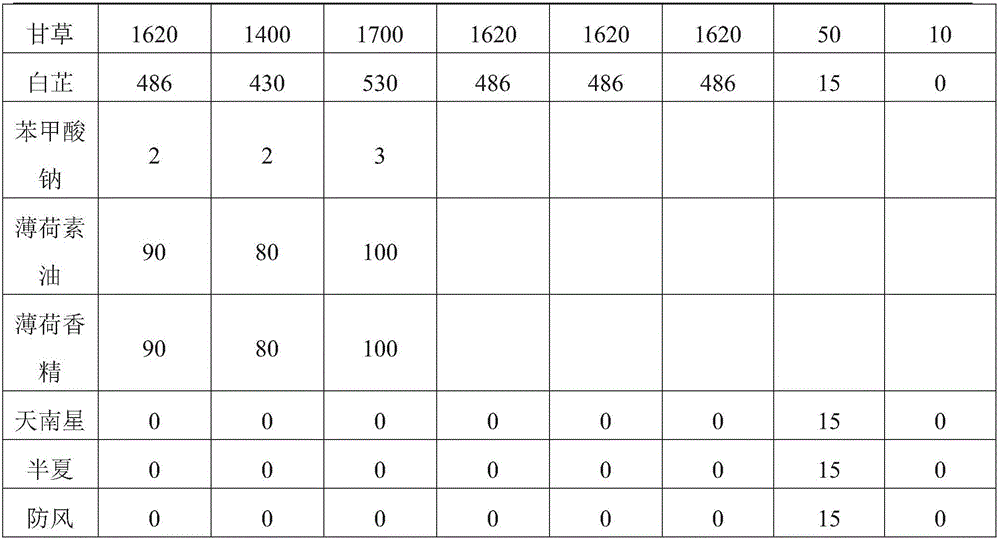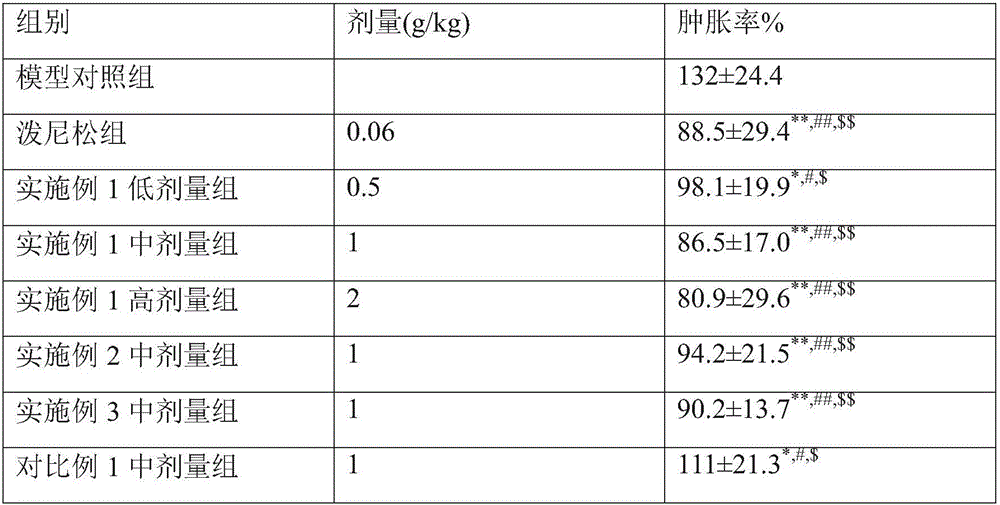Green plum for treating throat diseases and preparation method of green plum
A throat disease and green plum technology is applied in the field of green plum for treating throat diseases and its preparation, which can solve problems such as excessive treatment and achieve the effect of relieving throat discomfort symptoms.
- Summary
- Abstract
- Description
- Claims
- Application Information
AI Technical Summary
Problems solved by technology
Method used
Image
Examples
Embodiment 1-3
[0022] Step 1), prepare materials according to the formula shown in Table 1, take Gangmei, Platycodon grandiflorum, Radix Arisa, Radix Glycyrrhizae, Radix Achyranthes Radix, Angelica dahurica and Pinellia ginger in parts by weight, add 5 times the quality of water, decoct for 45min, filter, add the filter residue 5 times the quality of water, decoct for 45 minutes, filter, then add 5 times the quality of water to the filter residue, and decoct for 45 minutes;
[0023] Combined and concentrated to obtain the extract, the relative specific density of the extract at 60°C is 1.1;
[0024] Step 2), add sodium benzoate to the extract obtained in step 1), then add peppermint oil, peppermint essence and green plum germ, mix evenly, and after airtight storage for 72 hours, take out the green plum germ and pack it.
experiment example 1
[0036] Experimental example 1 anti-inflammatory effect drug efficacy evaluation
[0037] 1. Purpose of the experiment
[0038] Comparing the anti-inflammatory effect of each embodiment and comparative example (same dosage), provides theoretical basis for its curative effect for treating pharyngitis.
[0039] 2. Experimental principle
[0040] As a chemical inflammatory agent, xylene can cause the release of inflammatory mediators such as histamine, kinin, and fibrinolytic enzymes. The release of these mediators can cause the increase of local capillary permeability and the infiltration of inflammatory cells, resulting in acute exudative inflammatory edema of the ear. The above-mentioned inflammatory response experiment is often used to evaluate the anti-inflammatory effect of the test drug.
[0041] 3. Experimental animals and feeding conditions
[0042] 3.1 Experimental animals
[0043] Grade, breed: SPF grade Kunming mouse
[0044] Animal management: Animals are kept a...
Embodiment 1
[0091] Example 1 The high, medium and low dose groups can inhibit p-xylene-induced ear swelling in mice, and the inhibitory effect is enhanced with the increase of the drug dose. The anti-swelling effect of Comparative Example 1 and Comparative Example 2 that does not contain Araceae and Jiang Pinellia is weaker than that of the dosage group in Example 1, but still has a certain inhibitory effect. Comparative example 4 and comparative example 5 are weaker than comparative example 1 in inhibiting swelling.
PUM
 Login to View More
Login to View More Abstract
Description
Claims
Application Information
 Login to View More
Login to View More - R&D
- Intellectual Property
- Life Sciences
- Materials
- Tech Scout
- Unparalleled Data Quality
- Higher Quality Content
- 60% Fewer Hallucinations
Browse by: Latest US Patents, China's latest patents, Technical Efficacy Thesaurus, Application Domain, Technology Topic, Popular Technical Reports.
© 2025 PatSnap. All rights reserved.Legal|Privacy policy|Modern Slavery Act Transparency Statement|Sitemap|About US| Contact US: help@patsnap.com



